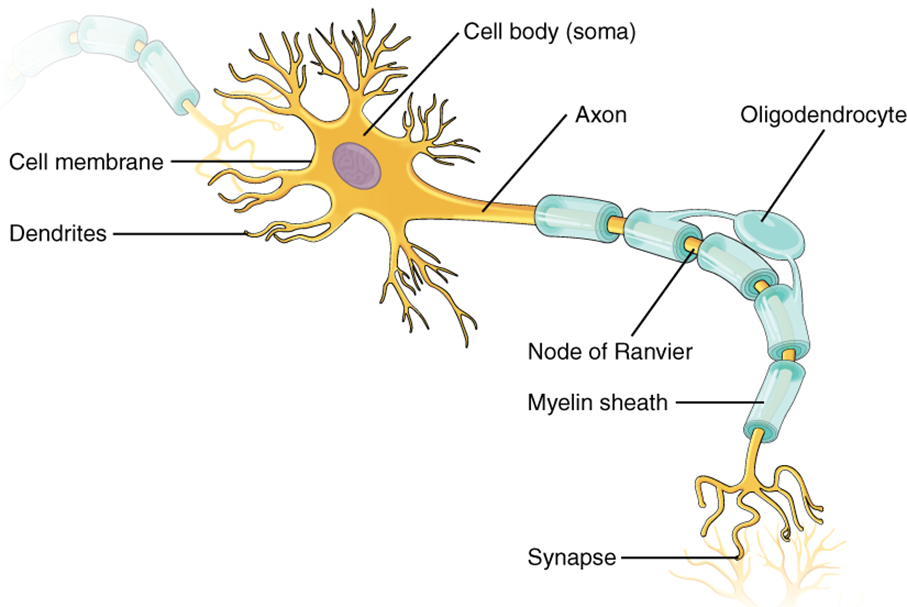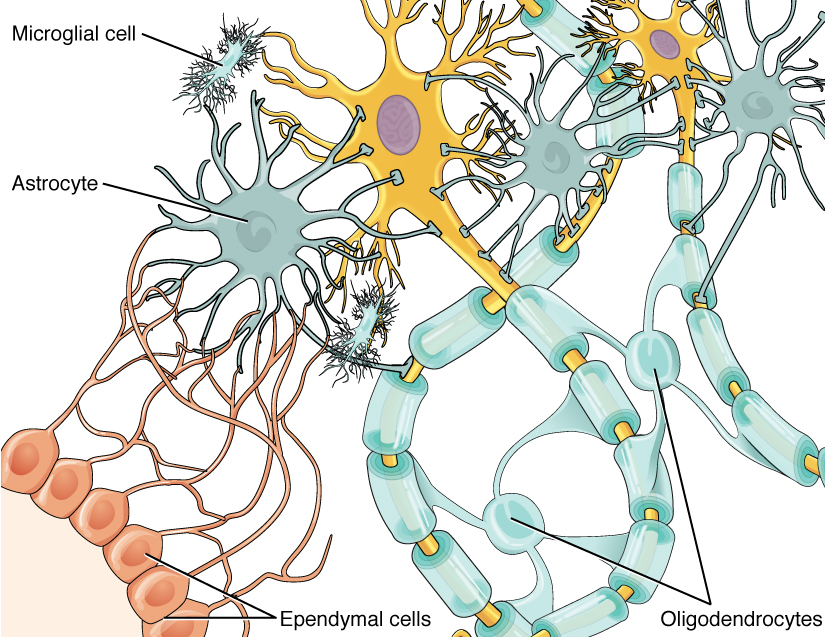10.1: Neuronas y Células Gliales
- Page ID
- 54298
El tejido nervioso está compuesto por dos tipos de células, neuronas y células gliales. Las neuronas son el tipo primario de célula que la mayoría de las personas asocia con el sistema nervioso. Ellos se encargan del cómputo y comunicación que proporciona el sistema nervioso. Son eléctricamente activos y liberan señales químicas a las células objetivo. Se sabe que las células gliales, o glía, desempeñan un papel de apoyo para el tejido nervioso. La investigación en curso persigue un papel ampliado que las células gliales podrían desempeñar en la señalización, pero las neuronas aún se consideran la base de esta función. Las neuronas son importantes, pero sin apoyo glial no serían capaces de realizar su función.
Neuronas
Las neuronas son las células consideradas como la base del tejido nervioso. Son responsables de las señales eléctricas que comunican información sobre las sensaciones, y que producen movimientos en respuesta a esos estímulos, además de inducir procesos de pensamiento dentro del cerebro. Una parte importante de la función de las neuronas está en su estructura, o forma. La forma tridimensional de estas células hace posible el inmenso número de conexiones dentro del sistema nervioso.

Figura\(\PageIndex{1}\): Las partes principales de la neurona están marcadas en una neurona multipolar del SNC. Donde el axón emerge del cuerpo celular, existe una región especial conocida como el montículo del axón. (CC-BY-4.0, OpenStax, Anatomía Humana)
Células Gliales
Las células gliales, o neuroglia o simplemente glía, son el otro tipo de célula que se encuentra en el tejido nervioso. Se considera que son células de soporte, y muchas funciones están dirigidas a ayudar a las neuronas a completar su función de comunicación. El nombre glia proviene de la palabra griega que significa “pegamento”, y fue acuñado por el patólogo alemán Rudolph Virchow, quien escribió en 1856: “Esta sustancia conectiva, que está en el cerebro, la médula espinal y los nervios sensoriales especiales, es una especie de pegamento (neuroglia) en el que se plantan los elementos nerviosos”. Hoy en día, la investigación sobre el tejido nervioso ha demostrado que hay muchos papeles más profundos que desempeñan estas células. Y la investigación puede encontrar mucho más sobre ellos en el futuro.



